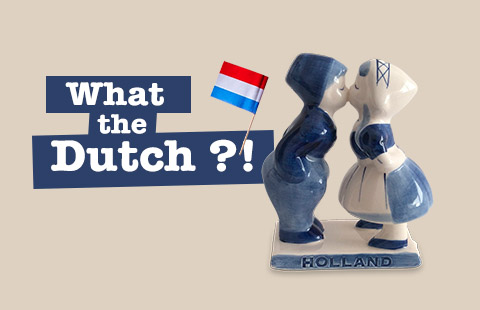In most countries, bread is a simple staple food. But for the Dutch, it is the main protagonist in a centuries-long love affair.
What the Dutch is for lunch?
A Dutchie staring into the bread display at Stadsbakker Meijer is like a carnivore eyeing its prey in the wild. It’s easy to imagine a special episode of Planet Earth featuring this moment, with David Attenborough narrating:
‘It all begins with a touch. As the Dutchman wraps his fingers around the sandwich, his heart begins to pound frantically. He lets out a muffled whimper of excitement; beads of sweat spring up on his brow. After a brief struggle, the helpless bammetje is reduced to nothing more than a few crumbs. A simple meal, but one that brings great pleasure.’
In an uncertain world, one thing is constant: bread is on the Dutchman’s table for breakfast, lunch, and 5pm dinner. Culinary variation is strictly reserved for sandwich fillings.
Bread on top of bread
I’ve seen weird chocolate sprinkles piled atop buttered bread (PSA: The Dutch are deeply serious about hagelslag, but to internationals it’s just a source of hilarity). Once, in a lecture hall, I watched in disbelief as a fellow student pulled out an entire loaf of bread at her desk and lovingly smeared peanut butter on every slice. The food pyramid in the Netherlands might as well be bread on bread on bread on more bread.
Even Wikipedia can’t resist a slice of shade when it comes to Dutch cuisine, which it describes as ‘rustic, frugal, and modest.’ This is the same country whose golden-age empire once spanned Asia, Africa, and South America.
A 17th century cookbook, De Verstandige Kok (The Sensible Cook), from 1669 showcases some classic Dutch cuisine which seems unusually intricate today: multiple courses, roasted meat, fish, pies, inventive salads, and plenty of wine. But in spite of all that colonial exploitation and pillaging that resulted in a taste for fine dining, the best that Dutch cuisine offers today is bread and stamppot washed down with a glass of karnemelk.
Even during their more culinarily adventurous periods, bread has always been essential to the Dutch diet. In the 17th century, the Dutch government appointed broodwegers, or bread inspectors, to maintain bread quality. Bakers were fined if their bread failed to meet size and weight requirements.
A peculiar passion for dough
Bread is so central to Dutch culture that it has become ingrained in colloquial language:
• The first weeks of marriage, the honeymoon period, are called ‘the white bread weeks.’
• A spoiled child may be referred to as a ‘white bread child.’
• When times are good, the Dutch may say that ‘the bread is on the cutting board.’ The one who put it there is ‘the bread-winner’.
• Letting one rip is referred to as ‘having bread in the pocket’.
So next time you bite into your ham-en-kaas sandwich, spare a thought for what this small slice of history really is: a national treasure.




